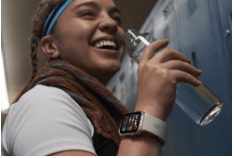Health technology is evolving at an unprecedented pace, transforming how individuals and professionals approach healthcare. From advanced diagnostic tools to real-time monitoring systems, these innovations are bridging gaps in accessibility, efficiency, and personalization. The adoption of digital tools like wearable devices and telemedicine solutions has grown significantly, driven by their ability to offer insights and enhance care. The rise of smartwatches exemplifies this shift. Devices like the HUAWEI WATCH D2 offer dynamic blood pressure monitoring, ECG analysis, and detailed health metrics, enabling users to take charge of their well-being proactively. With these advancements, health technology is not only improving outcomes but also reshaping daily health habits, ensuring a healthier future for all.
Artificial Intelligence in Healthcare
AI for Diagnosis and Treatment Plans
Artificial intelligence (AI) has become a cornerstone of modern healthcare, offering remarkable accuracy in diagnosing diseases and formulating treatment plans. AI-powered algorithms analyze vast datasets of medical imaging, laboratory tests, and patient histories to identify patterns that might elude even experienced clinicians. For example, AI tools can detect early signs of cancer in radiology scans with unprecedented precision, enabling earlier interventions and better survival rates. Moreover, AI systems assist in tailoring treatments to individual needs, ensuring medications and therapies align closely with the patient’s condition. This level of customization not only enhances effectiveness but also minimizes the risk of adverse reactions, revolutionizing traditional approaches to healthcare.
Predictive Analytics for Preventive Care
Beyond diagnostics, AI excels in predictive analytics, a field focused on identifying potential health risks before they manifest. By analyzing lifestyle data, genetic predispositions, and environmental factors, AI can provide actionable insights for preventive care. For instance, AI models might alert users about conditions that could elevate blood pressure, encouraging early lifestyle changes or medical consultation. This capability complements personal wellness efforts, such as understanding if habits like drinking coffee contribute to hypertension—raising questions like, “will coffee raise blood pressure?” These insights, paired with AI-driven advice, empower individuals to make informed decisions about their health and prevent long-term complications.

Growth of Wearable Health Devices
Real-Time Health Monitoring
Wearable health devices have transformed personal healthcare by offering real-time monitoring of vital signs. The HUAWEI WATCH D2, for instance, delivers unparalleled health insights through dynamic blood pressure tracking, ECG analysis, and sleep monitoring. Users can measure their blood pressure at any moment—whether at work, during leisure, or even while sleeping. This round-the-clock accessibility is vital for managing cardiovascular health and detecting early warning signs. Additionally, the smartwatch provides weekly blood pressure reports, helping users track trends and take action when necessary. Coupled with tips for healthy living, these features support those seeking to lower blood pressure naturally through regular exercise, balanced nutrition, and stress management.
Integrating Wearables with Healthcare Systems
The integration of wearable devices with healthcare systems has enhanced the flow of information between patients and providers. By pairing the HUAWEI WATCH D2 with the HUAWEI Health app, users gain access to a comprehensive platform that tracks their health metrics and syncs with their healthcare providers. This app supports Android and iOS devices, making it accessible to a broad audience. The data collected by wearables can be shared with medical professionals to inform consultations and treatment plans. For example, a physician could use a patient’s smartwatch-generated reports to better understand blood pressure trends and recommend appropriate interventions. This real-time connection bridges the gap between self-monitoring and professional care, ensuring a more cohesive and effective approach to health management.
Advancements in Telemedicine
Expanding Access to Care
Telemedicine has revolutionized healthcare by making it accessible to individuals in remote or underserved areas. Through virtual consultations, patients can connect with specialists without the need for travel, reducing barriers to quality care. This has proven particularly valuable for those managing chronic conditions, who require regular check-ins and adjustments to their treatment plans. Smartwatches and health apps have further amplified telemedicine’s potential. For example, the HUAWEI Health app enables users to share real-time health data during virtual appointments, providing doctors with a clearer understanding of their condition. Such seamless integration ensures that telemedicine is as effective as in-person care, if not more so in certain scenarios.
Enhancing Patient-Provider Communication
Effective communication between patients and healthcare providers is crucial for optimal outcomes. Telemedicine platforms supported by wearables facilitate ongoing dialogue, ensuring patients feel heard and understood. Real-time data sharing allows doctors to provide precise advice and adjust treatments as needed. For instance, a patient experiencing fluctuating blood pressure can use a smartwatch to record their readings and share them instantly with their doctor. This enables timely interventions, reducing the risk of complications. With advancements in telemedicine, such interactions are becoming the norm, fostering trust and improving overall care experiences.
Personalized and Genomic Medicine
Tailored Treatments Using Genetic Data
Personalized medicine leverages genetic data to design treatments that align with an individual’s unique biological makeup. This approach is particularly beneficial for managing diseases influenced by genetic factors, such as certain types of cancer or cardiovascular conditions. By understanding a patient’s genetic predispositions, healthcare providers can develop targeted therapies that maximize efficacy while minimizing side effects. Smart technologies complement this trend by offering tools for continuous health tracking, ensuring that treatments remain aligned with the patient’s evolving needs. For example, smartwatches can monitor vital signs to assess how well a treatment is working, allowing for timely adjustments that optimize outcomes.
Precision Medicine for Chronic Conditions
Chronic conditions like diabetes and hypertension demand a nuanced approach to management. Precision medicine addresses this need by using genetic insights to refine treatment plans. This level of detail ensures that interventions are both effective and sustainable, reducing the burden on patients. Wearables play a vital role here by capturing data that reflects the real-world impact of treatments. Blood pressure trends recorded by devices like the Huawei Watch D2 can guide adjustments to medication or lifestyle recommendations, ensuring they align with the patient’s specific needs. This combination of genomic insights and real-time monitoring represents the future of chronic disease management, offering hope for improved quality of life.
Conclusion
The future of health technology is bright, driven by innovations that make healthcare more accessible, personalized, and effective. From AI-driven diagnostics to wearable devices like the HUAWEI WATCH D2, these tools empower individuals to take control of their well-being. As trends like telemedicine and personalized medicine continue to gain momentum, the integration of technology into healthcare will become even more seamless. For individuals wondering how to balance lifestyle factors—such as the impact of coffee on blood pressure—with proactive health management, these advancements provide both the data and the guidance to make informed decisions. The journey ahead promises not just better health outcomes but a smarter, more connected approach to wellness.

